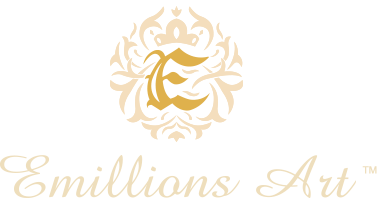During these uncertain times, art may be more relevant than ever.
To many of us — most of us — it is a time of unprecedented fear and uncertainty. Never in our lifetime have we experienced an event so dramatic and sweeping in its impact that it could unseat the very core of our daily lives.
And, naturally, we wish to do everything within our power to flatten the curve, to do right by our fellow humans and acquiesce to the calls for distance, isolation, avoidance, caution, care and vigilance. But this course leaves us with a question:
Where does beauty belong?
Is there still a place for the abstract, the entrancingly grotesque, the figurative, the spirited? Can we still stand in front of art? How do we experience our hallowed chambers of centuries past? The cathedrals, the museums, the public sculptures?
It’s amazing to watch the scores of professionals sacrificing everything to serve those stricken by the coronavirus. Doctors, nurses, researchers, scientists, statisticians — everyone working to ease the discomfort, find a cure, calm fears and concerns.
We are in awe of the specialists who are taking this fight head on. To some extent, we are left with the feelings of helplessness and irrelevance. What can we do? We are collectors and purveyors of fine art — and who needs art at a time like this?
Is art only to be consumed in times of social stability? For collectors and sellers of fine art, is this really the time for such transactions? Surely there must be more of a role for art to play than to be peddled like luxury trading cards.
These are not easy times. These are not easy questions.
Yet there is hope. We can turn an eye to history and see what it teaches. In 1918 the Spanish Flu swept the globe, leaving a death toll of millions in its wake. There are few examples of art created during this period and the ones that do exist are soberingly morbid.
As pointed out by the Wellcome Collection’s Allison C. Meier in her article exploring the theme, “With a lack of public commemoration, grief and recovery from Spanish flu were often private. And if a person recovered, it was hard to articulate or visualize this journey.”
It’s true. For much of human history we have grieved and healed in isolation. Forgoing the community minded choice to share the load of sudden loss and terror with the world around, our forbearers often opted to convalesce alone. Is this a lesson we can take from the art, or lack thereof, of pandemics in history?
To share our grief and fear.
None of us know what comes next. We don’t have a magic mirror or a crystal ball to divine visages of peace and prosperity. But we can make a promise. The fear will not win. The silence will not take hold. The pain will be painted sculpted and illustrated for our contemporaries to share. This is a vow not only to open ourselves to those experiencing these troubled times alongside us, but to generations to come.
See how we fought. See how we suffered. See how we feared. See how we overcame.
Art plays a tremendous role in the healing of a society reeling from a cataclysm unforeseen. It is up to the creators and purveyors of the arts to document what is transpiring, to execute with haste the daily upheavals—to forever scar the canvas and stone before them with the memories of these times. Create your art! This is the only way we can teach, in one hundred years, the lessons that we desperately yearn to draw upon now.
And for these days— these long, isolated and wearisome days, find beauty and disperse it. It is a deep comfort to be reminded that the world is still a wonderful place. A place filled with natural beauty and human kindness.
See art, share art, create art. It is the path to tomorrow.






We loved this blog. Very well written and profound.
We need art and creativity and beauty now more than ever. Thank you!